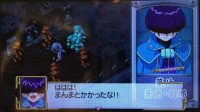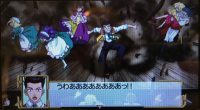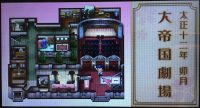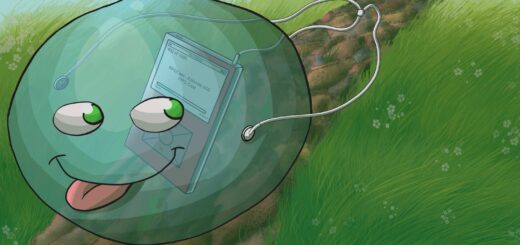PSP Backlog Quest Episode 2: Sakura Taisen
It’s been a while since I’ve updated my progress on playing through my PSP backlog. Last time I checked in, I was grousing about the failings of Final Fantasy Tactics, after which I tossed it aside and moved on to Sakura Taisen. So how does it take nearly four months to get through a game? Although I’m a slow player by nature, there are some extenuating circumstances that I’ll get into later, but first I want to explain a bit about Sakura Taisen.
I’ve had an affinity for the Sakura Taisen series since I played the single release that managed to find its way out of Japan, Sakura Wars: So Long My Love. When I started diving into my PSP backlog, I was incredibly excited for the opportunity to play some other games from the series. But would a game originally released in 1995 still hold up today? Goodness did it ever.
Sakura Taisen is the melding of a visual novel with a dating sim, broken up by tactical battles. The game is much more of a visual novel than anything that would be recognized as a modern strategy RPG. In this first incarnation, there is no traditional leveling system that typically accompanies RPGs. The characters have the same HP for the entire game — save for the story point where the entire party gets upgraded mechs. However, the dating aspects are incorporated into battles, with characters that have a positive opinion of the main character getting boosts in battle depending on the dialog choices the player makes during the course of the episode. The battles themselves are fine and the game is fairly easy and straightforward (except for the final boss who gave me quite the scare), but given its age — it predates Final Fantasy Tactics — that’s not an unforgivable sin.
Considering the vintage, battles look good
One of the things that attracts me to JRPGs are over-the-top premises that are still treated seriously. Sakura Taisen takes this to a whole new level. The game is centered around a secret unit of the Japanese army entirely composed of young women fighting demons of the underworld using steampunk mecha in an alternate timeline set in the 1920s. If that isn’t enough, the designers take it further by making this squad stay undercover by performing as a theatre group because… no one would expect a military organization to perform Shakespeare I guess? Heck, the first episode of the game is filled with jokes at the main character’s expense about the premise. Ichiro Oogami shows up to take over what he thinks is a military platoon and instead the commanding officer orders him to start punching tickets for the afternoon show. Perhaps the group being named the Flower Division should have tipped him off that this wasn’t a typical military posting. Fortunately for Oogami, demons attack and he is introduced to the secret military installation under the theatre, where he and the girls jump down tubes, change into uniforms, and are ready to defend Tokyo in mechs.
Sakura Taisen is structured like an anime, complete with episode titles at the beginning and a teaser trailer at the end of each “episode” showing the player what happens next time on Sakura Taisen. The game focuses heavily on its story, with each of the episodes revolving around a different character or a conflict between the characters. The thing that the Sakura Taisen series is most famous for, other than the insane setup itself, is the way the player interacts with the characters, a system known as L.I.P.S. (Live Interactive Picture System). Rather than using a traditional choice of A or B, when Oogami has to respond, the player will have a limited amount of time to choose a response (or not respond at all). There are also instances where the player can choose where to direct Oogami’s eyes and he will make comments based upon where he’s looking. Also, rather than having a single correct choice, the game often forces the player to make a definitive choice at the risk of offending some of the characters. Attempting to thread the needle and skirt offense between two characters often leaves Oogami annoying everyone. It’s an interaction system that feels like it was well ahead of its time.
That opening gets me humming along EVERY SINGLE TIME
The characters themselves are a big part of the appeal of the game as they are unique, fun, and packed with personality. They vary from the sweet Sakura, a country girl who’s a master of swordcraft, to Sumire, the star of the theatre with a massive ego to match. The rest of the cast runs the gamut with different ages (Iris, a nine-year-old from France who’s convinced she’s going to marry Oogami), countries (Maria, a cool Russian beauty who has a dark past marred by the Russian Revolution, and Kohran, the brilliant inventor from China whose inventive ambitions occasionally have explosive consequences), and skills (Kanna, who is a martial arts master from Okinawa). With such a diverse group of people from a variety of backgrounds, conflicts inevitably ensue and much of the story revolves around Oogami getting everyone to work together and form a harmonious team. The characters are all individually interesting, but taken together the surprisingly positive theme emerges of young women from across the globe binding together to fight the world’s problems. Almost everything about the game is positive and upbeat, constantly bringing a smile to my face.
While lots of Sakura Taisen is about putting on plays and the conflicts between the girls, the overarching plot is an interesting study in the conflict between modernity and tradition. The main villain for the majority of the game is summoning demons with the intent of toppling the government. He intends to reinstitute the Shogunate and take Japan back to traditional Shintoist values and lifestyles. It makes a powerful statement with modern technology piloted by newly emancipated women beating back the conservative voices arguing for everything to stay the same. You can get lulled into complacency with all the silly, though entertaining, dressing but the game is actually tackling serious societal themes and making important points.
The other big thing I noticed playing this game is the impressive production values. There are plenty of visual novel-RPG hybrids that populate the market these days. Generally, these are low-budget affairs where the cut corners are all too apparent. Sakura Taisen impressed me that, for a game made in 1995, it looks better than most current releases — though admittedly the PSP version is based off the Dreamcast remake. Character models are expressive and detailed, the voice acting is top notch, and fully animated cutscenes are sprinkled in to break the monotony. It’s an incredibly fun and charming experience. The RPG elements may be rudimentary, bordering on nonexistent, but the characters are likable, the story is engaging, and the over-the-top elements make it stand out.
So if this game was so amazing and I was enjoying the experience, why did it take so long to finish? Well, that involves the translation. The fan translation of this game is split into two parts, the first half of the game is very competently localized and was enjoyable enough that it almost made the necessity of using a second device to read it palatable (as there are no patches). Unfortunately, the only translation for the second half of the game is a clumsy, literal translation from Japanese to English that sapped the personality from the text and made it a slog. It’s a testament to how great the game is that I made it through the bland translation of the second half.
So that’s Sakura Taisen. What a weird, wonderful experience. It’s nice when a game that you’ve been looking forward to actually lives up to expectations. With the news that Sega is reviving the series after a decade in the wilderness, I couldn’t be more excited to pilot some mechs and perform plays on a modern console. So far in 2018, I’ve dropped one PSP game and completed one other, but I’ve added three more games to the backlog. I picked up the Zero no Kiseki and Ao no Kiseki, the unlocalized Trails games set between Trails in the Sky and Trails of Cold Steel to finish out my Trails collection. I also picked up Shining Blade because it apparently shares a battle system with the PSP Valkyria games and I found a fan translation for that as well. So my progress on the backlog is… -1. That sounds about right.









Recent Comments